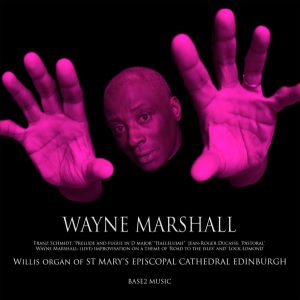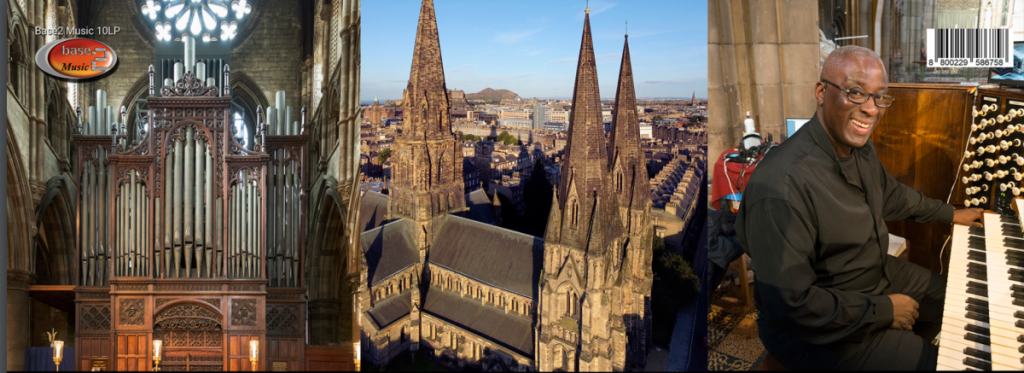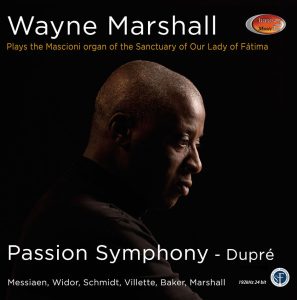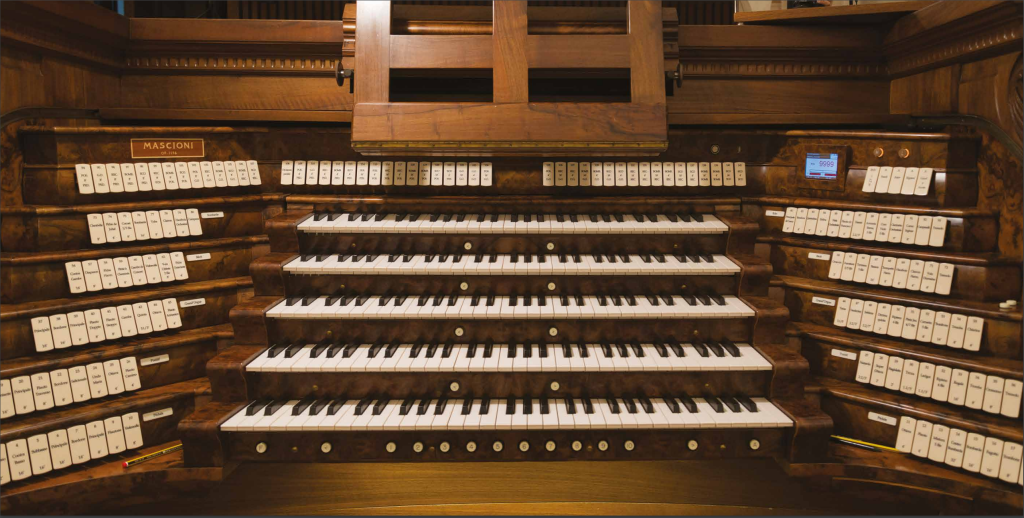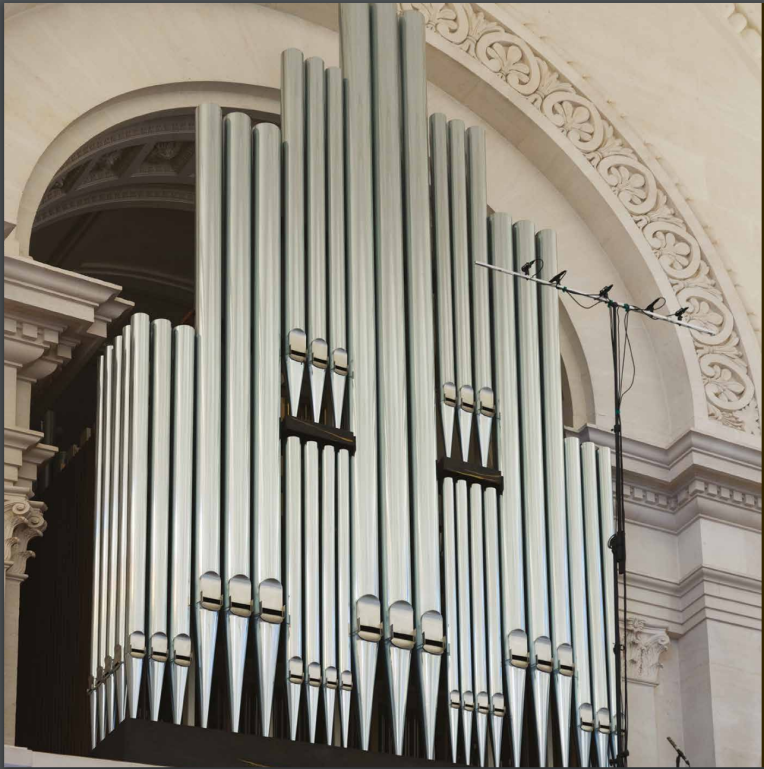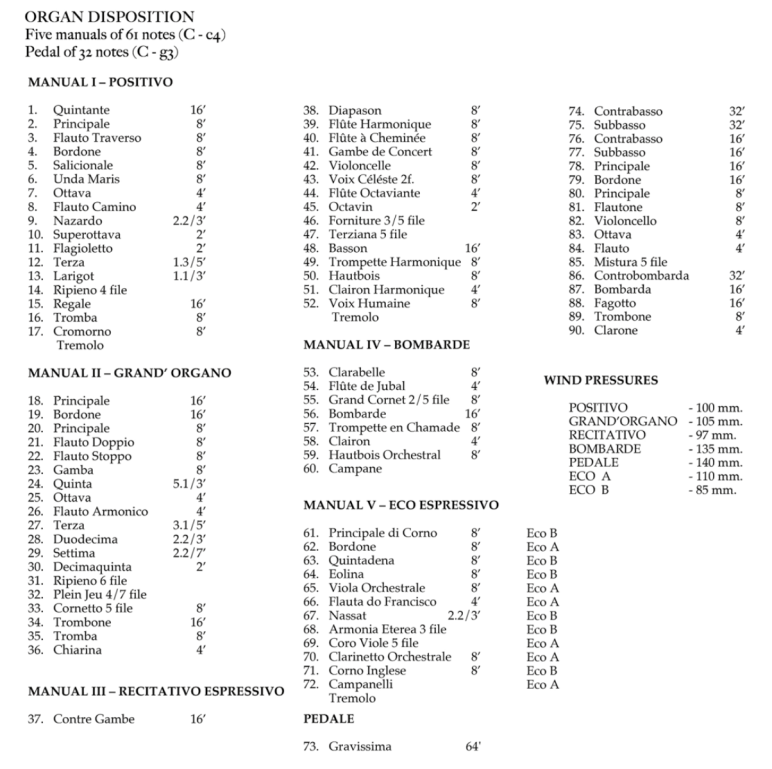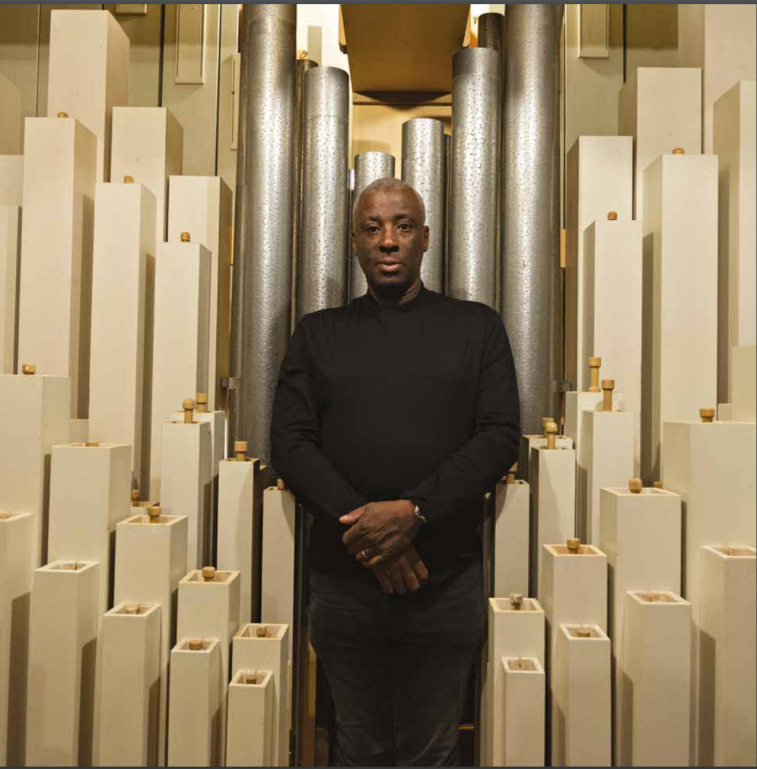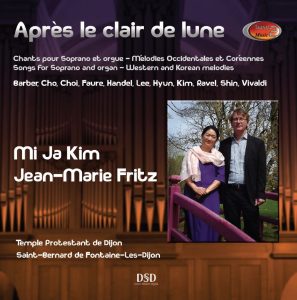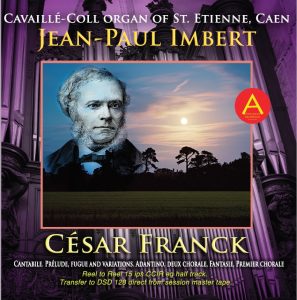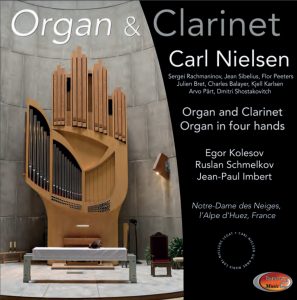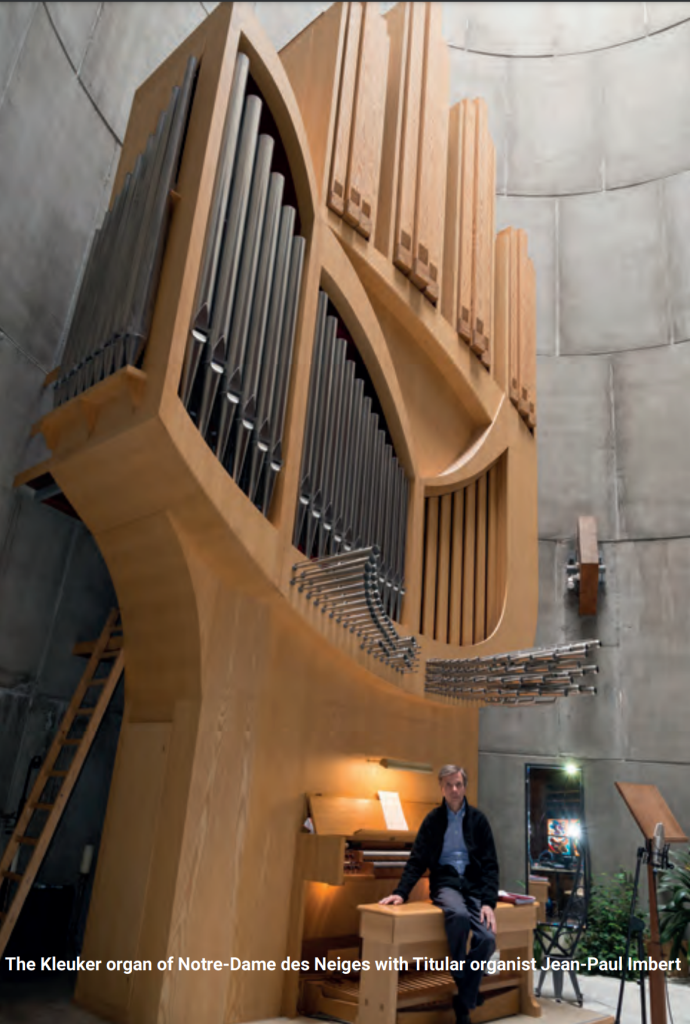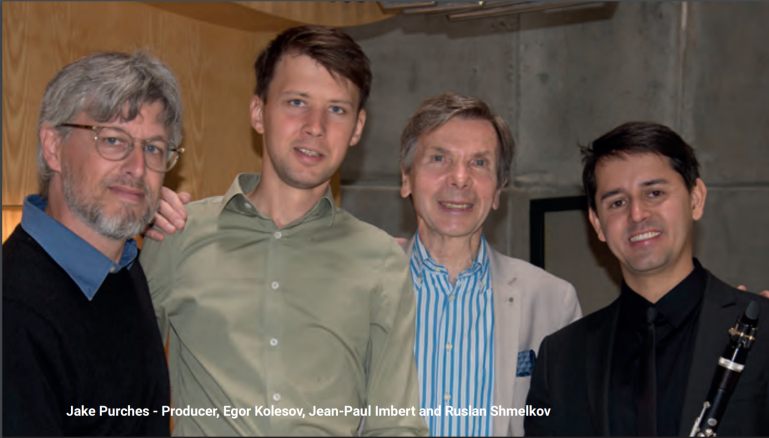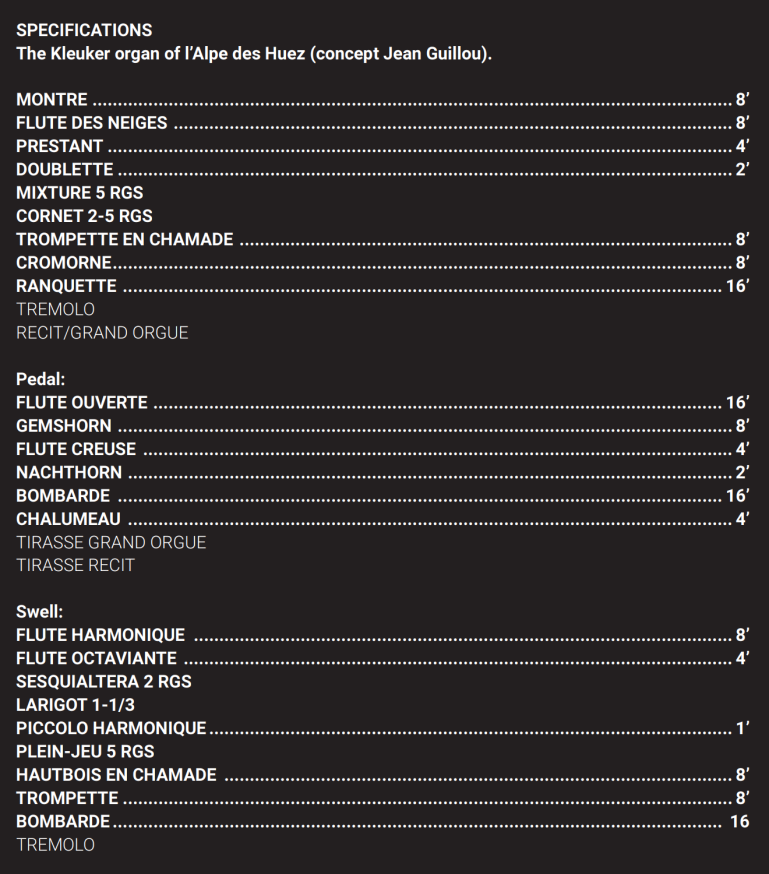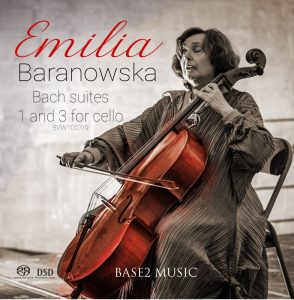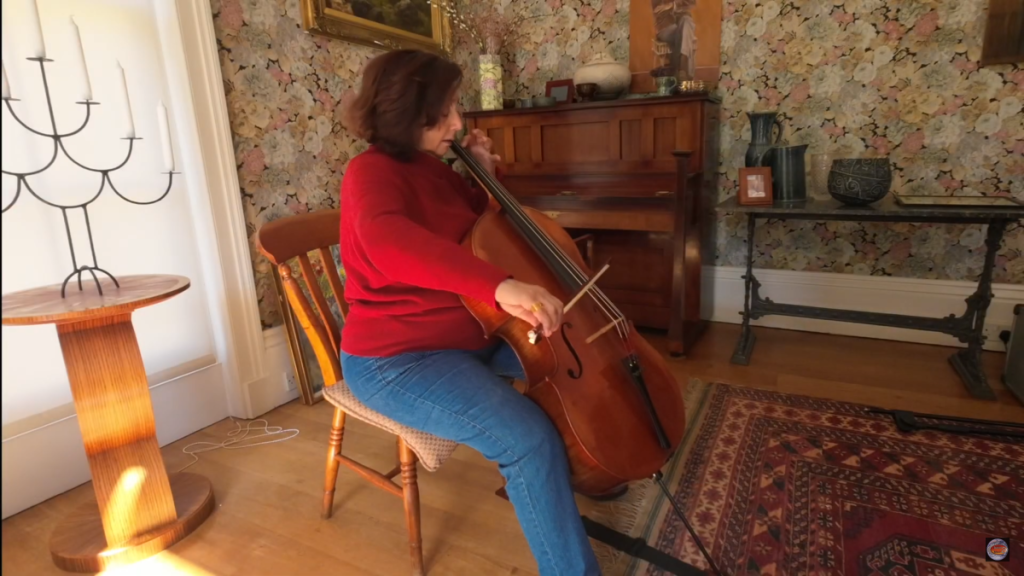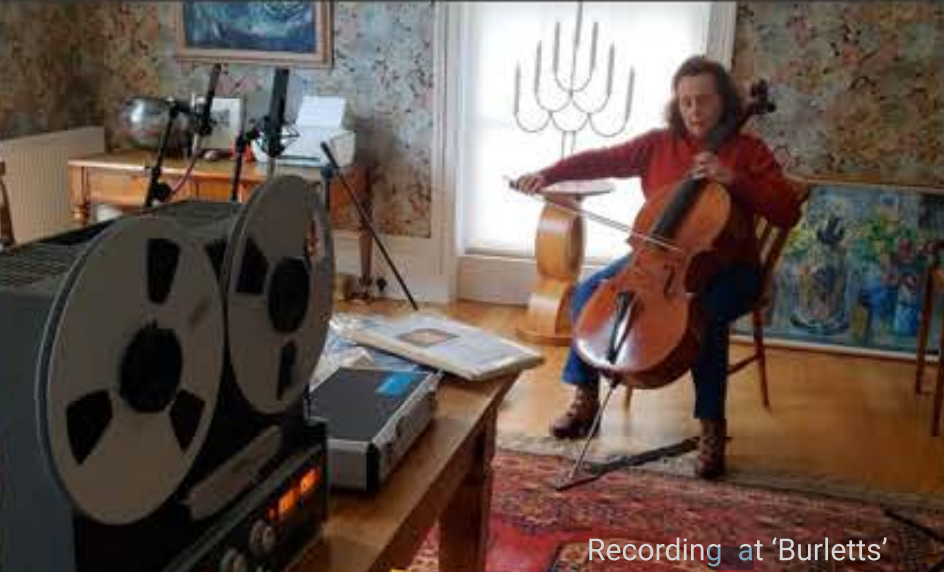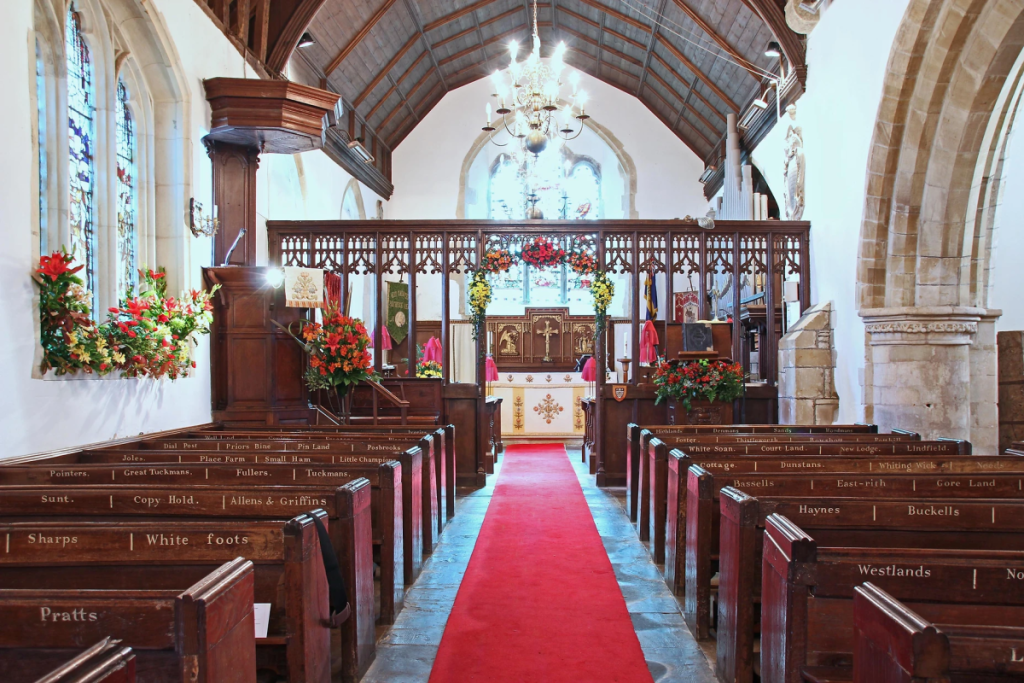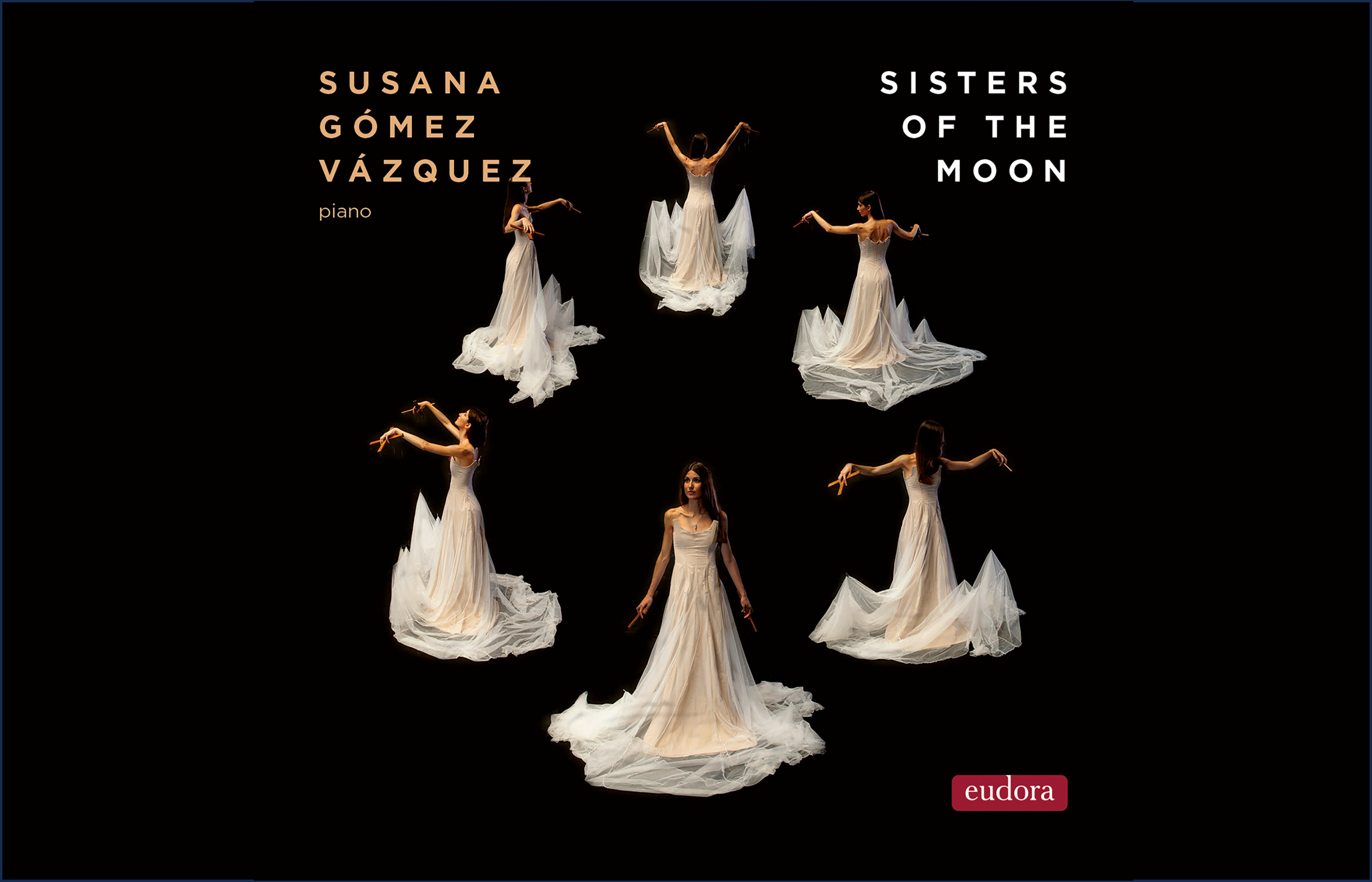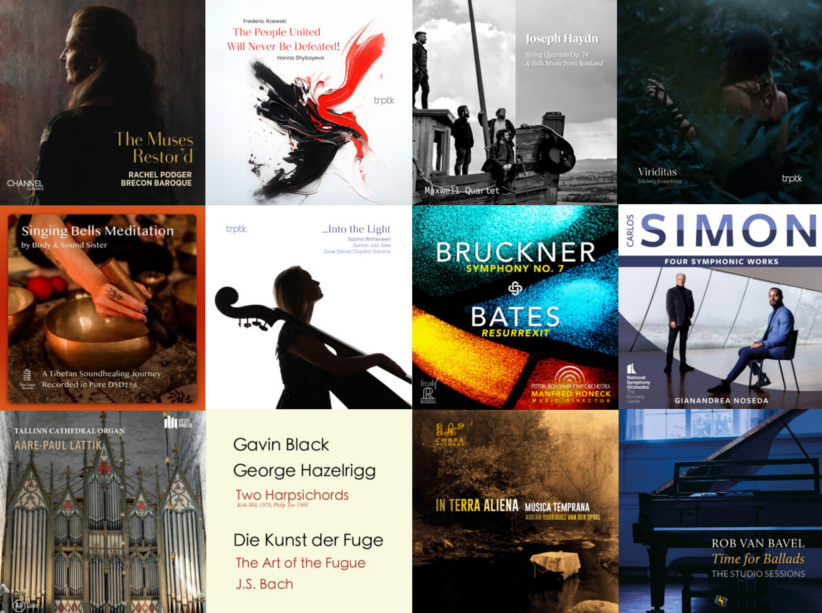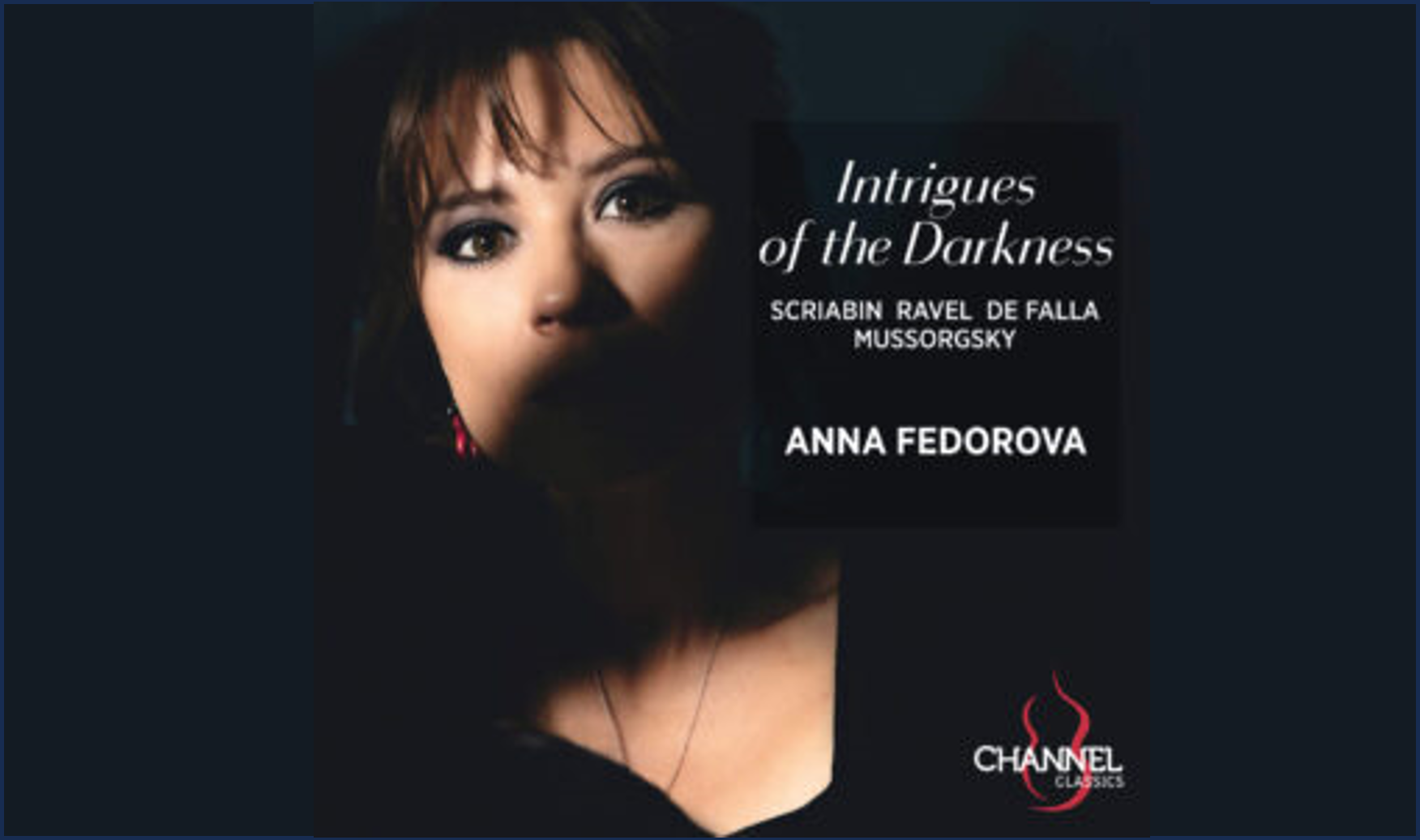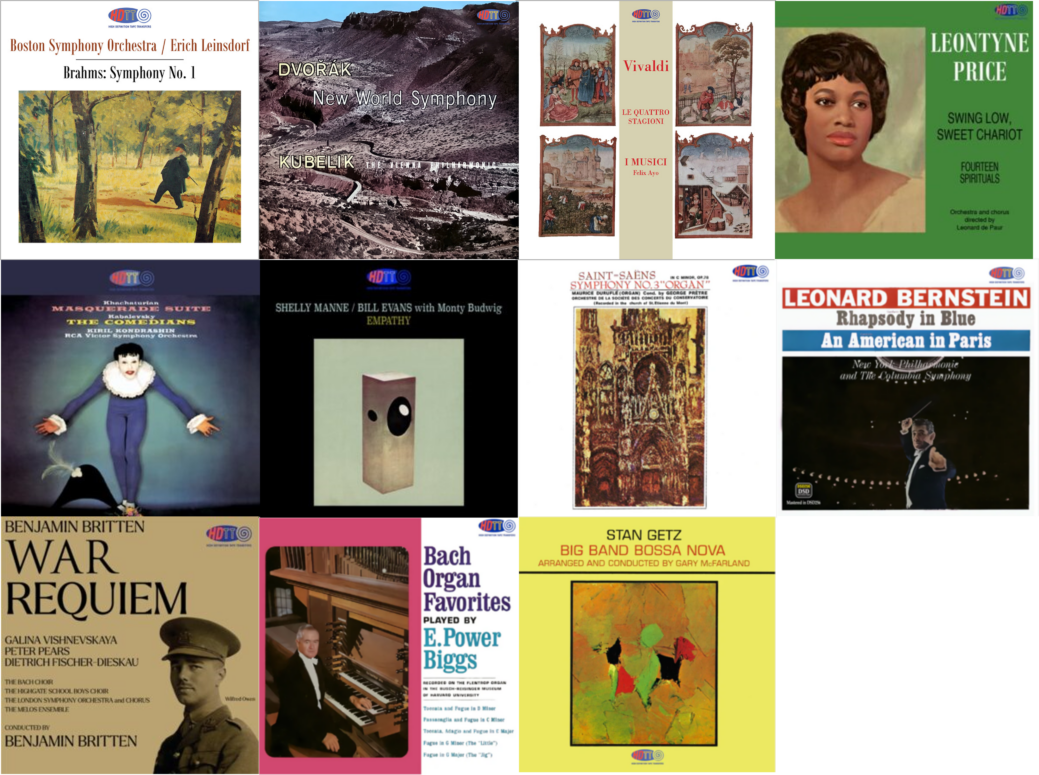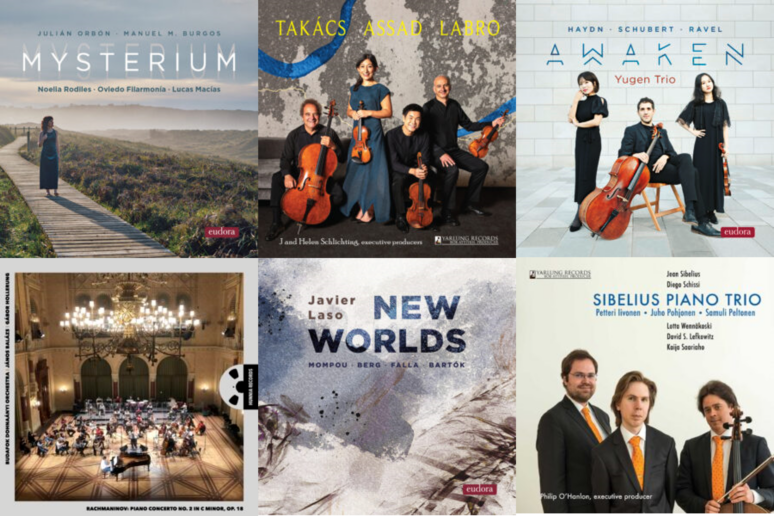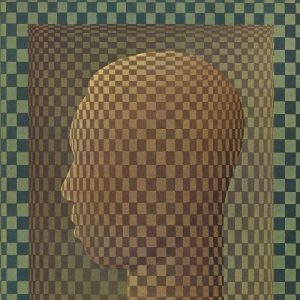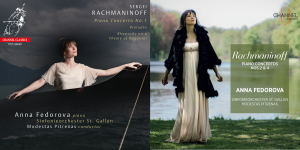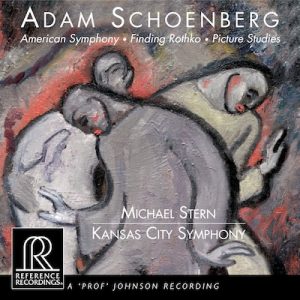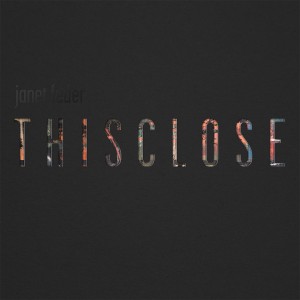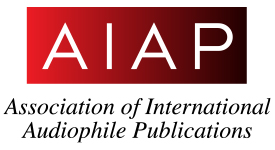Base2 Music, located in West Sussex, UK, is a fairly new label, founded in 2017 by owner, producer and recording engineer, Jake Purches. Jake captured my attention because he's been focusing on a love of mine: well recorded organ music on some of the great organs around the world with internationally respected musicians. A fellow self-described audiophile and music lover, Jake is committed to creating recordings of excellence using well-chosen venues with state of the art equipment and carefully selected microphones. His multi-channel surround and stereo recordings use no compression and no gating of frequency response. The albums he's released thus far are the real deal for lovers of pipe organs.
And I would add a further observation about Jake Purches' recordings. They all have a very attractive relaxed, personal touch in the performances. The artists consistently seem to be enjoying themselves. I'd noticed this subconsciously, but the thought had not crystalized until Jake mentioned to me in an email exchange: "The recordings I do with artists are about being free rather than being robotic to the scores. We achieve this by forming friendships and socializing together, rather than a formal setting. I like to get to know each artist way before we do anything. It really breaks the ice and I think we can get a more liberated performance."
And, yes, this relaxed freedom of the performances truly comes across in these recordings. I think it is one reason (beyond their technical excellence) that they have appealed to me so much.
Here are several I highly recommend.
The Willis Organ of St Mary's Episcopal Cathedral Edinburgh, Wayne Marshall. Base2 Music, 2022 (DXD) HERE
Here is the huge Willis organ of St. Mary's Episcopal Cathedral in Edinburgh being put through its paces by a master. British conductor, organist and pianist Wayne Marshall was Chief Conductor of WDR Funkhausorchester Cologne and Organist and Associate Artist of the Bridgewater Hall. As an organ recitalist, he performs worldwide with a varied repertoire. He has performed with orchestras including the Los Angeles Philharmonic and the Berlin Philharmonic under Rattle and Abbado. In 2004, he gave the inaugural organ recital in the Walt Disney Concert Hall, Los Angeles and in 2006 he inaugurated the organ at the National Grand Theatre in Beijing.
In this (all too short) recital, Marshall, explores just about every facet of the massive instrument, comprehensively restored by Harrison and Harrison in 2020. The three pieces on this album were recorded in a live recital during the 2021 Edinburgh festival. The main piece is the Prelude and Fugue in D Major by Bratislavan composer Franz Schmidt (1874 - 1939). The concluding work is a live improvisation by Wayne Marshall on two Scottish themes.
Marshall is a bold, commanding organist with brilliant technique. I will be seeking out more of his work.
The recording is full bandwidth: 16Hz - 40kHz. For those with multi-channel capabilities, the 5.1 surround edition has a .1 subwoofer track. That should be a blast!
For LP fans, Base 2 has this recording available on limited edition LP at 45rpm, in full frequency down to 16Hz. That must be a massive groove swing! Available as of this writing through their own music store HERE.
Dupre's Passion Symphony plus other works, Wayne Marshall. Base2 Music, 2020 (Pure DSD128, DSD256) HERE
The central piece is Marcel Dupré's Passion Symphony, accompanied music from Messiaen, Schmidt, Baker, Villette and Widor. All of this is performed on the fabulous Mascioni organ in the Sanctuary of Our Lady of Fátima in Portugal. If you enjoy large scale organs that can be played with power, you will enjoy this recording. I certainly am enjoying it. And if you can play the multichannel release, I suspect the 12-second reverberation time and the echo organs captured in the rear channels will be a treat to hear.
Organist Wayne Marshall comments in the liner notes:
"I would never have imagined that a chance meeting backstage at the Royal Albert Hall on 15 May 2018, would have led to the making of this recording on the fabulous Mascioni organ in the Sanctuary Of Our Lady Of Fátima in Portugal... And a serendipitous decision it turned out to be. The Basilica is an awe-inspiring place with an outstanding acoustic. In my mind, this was the perfect choice for this project. The fabulous Mascioni organ is a joy to play, with its wide dynamic range, and the building's 12-second reverberation time is astonishing. A perfect venue for the making of a recording. The Mascioni organ suits the music very well, and l hope that every aspect of this instrument is demonstrated to the full. It is beautifully subtle and has foundations of quite fantastic power"
In fact, this is the first commercial recording on this instrument following a complete renovation of the sanctuary and the original 1952 Ruffati organ which had lain silent for several years. Mascioni was chosen to rebuild it, maintaining some part of the original pipework and the console cabinet. The original organ was completely dismantled in May 2014 to facilitate the restoration of the church's interior, and then brought to Macioni's workshop in Italy. The restoration project featured a reduction in the number of pipes with the aim of promoting quality over quantity. Notwithstanding this approach, the organ is the largest instrument in Portugal, with more than 6500 pipes.
Après le Clair de Lune-Songs for Soprano & Organ, Mi Ja Kim, soprano, and Jean-Marie Fritz, organ. Base2 Music, 2019 (Pure DSD128) HERE
My journey through several of these Base2 Music organ recordings continues amid pleasant surprises. This recording of high voice and organ is a combination many recording engineers would find daunting to undertake. Getting the balance right with just a stereo pair of microphones and doing this live directly from the mike preamplifiers into the DSD128 recorder is not something for the faint of heart. But, producer/recording engineer Jake Purches manages to accomplish some excellent results with aplomb.
This is about as direct and pure a recording chain as one can imagine. That Jake gets such superb balance between voice and organ is a testament to his skills finding just the right location within the performing space to set his microphones. And that he is able to do this seamlessly across two different organs and recording venues is remarkable.
Jake Purches tells us "In deciding to make this recording, my intention is to mix Western music, both Baroque (Vivaldi, Handel) and post-Romantic (Fauré, Barber) with Korean melodies, which are themselves marked by European Romanticism, since the composers of these melodies are contemporary and are familiar with western classical music."
"This journey is between the West and the East and through various languages (Korean, Latin, French, German, English) and is a voyage through the four seasons. These Korean melodies, and more widely the poetry of my native country, evoke the seasons and the beauty of nature; it is sensitive and very rich in poetry that meets the European poetry of Romanticism. These Korean melodies are usually accompanied in Korea on the piano or by a symphony orchestra."
Born in Korea, Mi Ja Kim received a singing diploma from the music department of the National University of Chonnam in 1991 and the highest degree in singing lessons from the National Conservatory of Chalon-Sur-Saone, France. In 2003, Kim moved to Dijon, France, where she graduated with singing, harpsichord, musical analysis, theory, chamber and choir degrees at the National Conservatory of Dijon. Kim has also studied at the music therapy department of the Schola Cantorum in Paris from 2004 to 2006. Kim is a recital soloist and currently directs the choir of amis Voix in France.
Nicely and enjoyably performed, very well recorded.
Franck Works on the Cavaille-Coll Organ, Jean-Paul Imbert. Base2 Music, 2017 (from analog tape to Pure DSD128) HERE
There is something very special about listening to César Franck's music performed on a Cavaillé-Coll organ. The timbre of a Cavaillé-Coll is simply unique. The performances by Jean-Paul Imbert are impressive—well judged and very persuasive. And when as well recorded as in this release by Jake Purches, the combination is pure pleasure.
If you've not heard the organ works of Cesar Franck played on a Cavaillé-Coll organ, you've not heard those works. This album, performed by Jean-Paul Imbert on the Cavaillé-Coll organ of St Etienne, in Caen, France, will solve this woeful gap in your listening experience. The organ of St. Etienne in Caen is among the top five Cavaillé-Coll organs left to us—and what an instrument! Marie-Claire Alain also recorded many of Cesar Franck's works for organ here in 1996 for Erato. That is a wonderful set on vinyl.
This was recorded on a modified Revox B77 Analog Tape Recorder at 15ips with custom head amplifiers by the late Tim de Paravacini, using a stereo of Sennheiser MKH8020 microphones, and then transferred to DSD128 for this release. For those of you able to play this recording at full volume and with full frequency extension are in for a treat!
Organ and Clarinel, Egor Kolesov, Jean-Paul Imbert, Ruslan Shmelkov. Base2 Music 2019 (DSD128) HERE
Music for organ and clarinet by Shostakovich, Nielsen, Rachmaninoff, Arvo Part and others, performed on the iconic The Kleuker organ of Notre-Dame des Neiges.
Producer and recording engineer Jake Purches has accomplished a very nice balance of organ and solo clarinet in these recordings of a broad range of works. The sound is immaculately clean, precise and balanced.
This album is the concept of Yegor Kolesov (organ, St. Petersburg) and Ruslan Shmelkov (clarinet, Moscow). With experience working in various ensembles (baroque and modern music ensembles, chamber ensembles, orchestras), Yegor and Ruslan decided to create their own ensemble, which they named "Organ and Clarinet," and have been performing together since 2016. The duo has given concerts in Saint Petersburg, Moscow, Kirov, Yuzhno-Sakhalinsk, Tromsø, Paris, Strasbourg, Helsinki, Tallinn and elsewhere in Europe.
This 2019 recital was recorded in the Notre-Dame des Neige, l'Alpe d'Huez, France, utilizing the iconic organ conceptualized by organist Jean Guillou and built by the organ builder Detlef Kleuker from Bielefeld, Germany. This is a recital of nuance, color, and surprises. It is not a "blow your hair back" extravaganza like the The Willis Organ of St Mary's Episcopal Cathedral Edinburgh above. But, if you want to get a bit of a sense for the power of the l'Alpe d'Huez organ, try Nielsen's Commotio, Op. 58. It will give you a sense of the extensive range of this organ with it's various 16' pipes.
The eminent organist Jean-Paul Imbert, Tutular organist at Notre-Dame des Neiges and successor to Jean Guillou, collaborates on the album in works for four hands by Julien Bret (b.1974) and Charles Balayer (b.1957), plus a Toccata for solo organ by Flor Peeters (1903 - 1986).
Overall, this is an engaging recital with a great deal of variety. It very nicely highlights the immense range, color and clarity of tone possible on this organ. And the sound quality of Jake Purches recording is a tour de force demonstration piece for balancing organ and solo instrument. Well done!
Bach Suites for Solo Cello Nos. 1 and 3, Emilia Baranowska. Base2 Music 2019 (DSD128 Session Recording and DXD Concert Recording) HERE and HERE, with bundle available HERE
Okay, this is NOT ORGAN. But it is such an interesting study that I needed to include mention of these two albums. They are also nicely played and very nicely recorded.
These are two separate performances of the same music, by the same musician, one live, the other in a recording session, and each in a different venue. The DSD128 recording was made at 'Burletts,' the home of Humphrey Avon in Bramber, West Sussex. The DXD recording is of a live performance at St. George's Church in West Grinstead, West Sussex, in front of an audience of approximately 90 people.
So..., different venues, different acoustics, different digital recording formats, same artist, same microphones, same recording engineer. Not at all any sort of controlled comparison. But still a fascinating study in the different sounds. Choose one to just enjoy the music, choose the bundle to enjoy the comparisons/contrasts. Will you have a favorite? I think I do, but I change my mind from listen to listen.
Jake told me via an email exchange that for the DSD recording at 'Burletts', "I kept things minimal. I used three microphones, which were mixed in an analog mixer, and the stereo output was recorded onto a stereo DSD recorder at DSD128. At the same time, the mixer sent a signal to a reel-to-reel tape recorder at 15-ips."
Update: Okay, Ann told me my paragraph second above was a copout and I needed to fess up. So, here you are... To my ears: 1) The Recording Session recording is more intimate (as appropriate to the recording space as seen in photo below). The DSD128 sonics complement this more intimate space with a smoother, more analog-like sound, but also with a great sense of openness and air around the instrument. 2) The Concert Recording clearly is in the bigger acoustic space (as heard by the audience applause), but the sound of the cello is more closed in, a bit more congested with less air around the instrument, a less open airy top end, and a subtle raspiness to the string tone that doesn't sound quite right. 3) Which do I find more "natural" sounding, more like the real instrument in a real space? The Recording Session, note faults and all; it is just more transparent, more open, and with a more extended high string tone. There—said it.
Born in Sofia, Emilia Baranowska began piano lessons at the age of four with her mother, Maria Dimitrova Baranowska, a pianist and renowned teacher. At the age of nine, Emilia switched to the cello and became a student of the great Bulgarian cellist Zdravko Yordanov, a disciple of Rostropovich. At the age of 18, Emilia left her native country and settled alone in Paris to pursue her musical studies at the École Normale Supérieure de Musique. She has been called "the greatest cellist in the world" by France Soir, a virtuoso (France America), and a superior artist (Le journal de Genève)—all to give you a bit of background on the musician in case you are not already familiar with her.
I find her most enjoyable and engaging in these works. She has a delicate, light touch, with expansive phrasing. Her approach to the music reminds me so much as being in flight, soaring, and free. Never pedantic, never dry, never over-indulgent either. I've been quite enjoying these performances. And the recording quality is top notch.
Emilia Baranowska recording the Bach Suites 1 and 3 in the music room of 'Burletts' on 16-18 September 2022
St. George's Church in West Grinstead, West Sussex. Recording location for the live performance on 16-18 September 2022. (Photo courtesy of St. George's Church.)
About Base2 Music
Base2 Music works to deliver music to audiophile standards. Many of their recordings are available in both digital downloads and in physical media. The Base2 Music Store offers their albums in digital download, CD, Hybrid SACD, limited edition LP, and reel-to-reel tape. (Not all titles available in all formats.) A full range of digital downloads formats are available through NativeDSD here.
Photos courtesy of Base2 Music.




